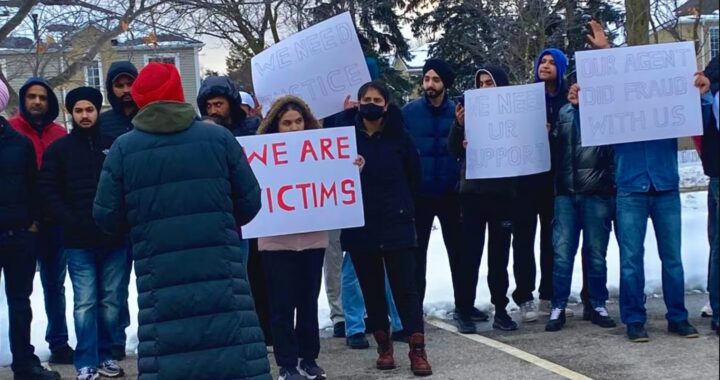Racism and Discrimination towards Immigrants in Canada from Asia

Racism and Discrimination towards Immigrants in Canada from Asia
Racism and discrimination are issues that are unfortunately all too common for immigrants from Asia. Despite their contributions to society, Asian immigrants often face unfair treatment and prejudices that are rooted in historical stereotypes and misconceptions. This article will explore the ways in which Asian immigrants experience racism and discrimination in different parts of the world, and what can be done to combat these issues.
Roots of Racism lie in legacy of exploiting and oppressing Asian countries
The roots of racism and discrimination towards Asian immigrants can be traced back to the long history of colonialism and imperialism. Many Western countries have a legacy of exploiting and oppressing Asian countries, which has created an unequal power dynamic that still exists today. This legacy has also led to the perpetuation of harmful stereotypes about Asians, such as the model minority myth that portrays Asians as being high-achieving and successful, but also as being robotic and lacking in personality.
In WWII hundtred of thousands of Japnese forcibly removed from their homes and sent to Internment camps
In North America, Asian immigrants have long been subject to discrimination and racism, particularly in the United States. One of the most egregious examples of this was the internment of Japanese Americans during World War II, in which over 120,000 people of Japanese descent were forcibly removed from their homes and sent to internment camps. This was done out of fear and paranoia that Japanese Americans were a security threat, and it had devastating consequences for those affected.
In more recent times, Asian Americans have faced discrimination and hate crimes related to the COVID-19 pandemic. The virus originated in China, and as a result, many people have falsely blamed Asian Americans for its spread. This has led to a surge in hate crimes against Asians, including verbal and physical assaults, and even murders. Many Asian Americans now feel unsafe in their own communities, and there has been a call for more action to be taken to protect them.
Perception that Asians steal the Jobs also aggravates racism in USA and Canada
Another factor that contributes to racism towards Asian immigrants is the perception that they are taking away jobs from locals. Many people believe that immigrants are taking jobs that should belong to them, which leads to resentment and prejudice. This perception is fueled by media reports that often portray immigrants in a negative light, making them a convenient target for frustration and anger.
Often rumour mills work extra time to spread rumours and fears that Asians spread Virus
In Europe, Asian immigrants also face racism and discrimination, albeit in different ways. In the United Kingdom, for example, there has been a rise in anti-Asian hate crimes since the start of the pandemic, with many incidents being related to the mistaken belief that Asians are responsible for the spread of the virus. Additionally, there has been a long history of racism towards South Asians, who are often stereotyped as being cheap and uneducated.
Racism has spread its wings in Australia too
In Australia, there has been a similar rise in anti-Asian hate crimes, with many incidents targeting Chinese Australians in particular. This has been fueled by anti-China sentiment, which has been stoked by the Australian government’s increasingly hostile stance towards China. Many Chinese Australians now feel unwelcome in their own country, and there is concern that this could lead to a brain drain, as talented and skilled people leave for more welcoming countries.
In Asia itself, there are also issues of racism and discrimination towards immigrants from other parts of the continent. For example, in Japan, there is a widespread belief that Japanese people are superior to other Asians, and immigrants from countries like China and Korea often face discrimination as a result. Similarly, in countries like India and Pakistan, there is a long history of prejudice towards people from other parts of the continent, such as the northeastern states of India or the Hazara people in Pakistan.
How to Combat Racism
So, what can be done to combat racism and discrimination towards Asian immigrants? One of the most important things is to raise awareness of these issues and to challenge harmful stereotypes and misconceptions. This can be done through education and media representation, as well as through community outreach and dialogue.
Holding perpetrators of hate crimes accountable for their actions.
Another important step is to hold perpetrators of hate crimes accountable for their actions. This means increasing funding for law enforcement agencies and ensuring that they take these crimes seriously. It also means working to change laws and policies that disproportionately affect Asians and other minority groups, such as the school-to-prison pipeline or the over-policing of certain communities.
Finally, racism and discrimination towards immigrants from Asia are a serious issue that needs to be addressed. It is important to understand the root causes of discrimination and to develop strategies to eliminate them. Creating awareness, education programs, and policies that protect the rights of immigrants are some of the ways to combat racism. We need to create a society that is inclusive and welcoming to all immigrants and promotes diversity and inclusion.

 Recent Changes to Canada’s Work Permit Rules and its impact on Immigrants from India
Recent Changes to Canada’s Work Permit Rules and its impact on Immigrants from India  Applications for UK Immigration witness major decline as the Immigration Laws undergo significant changes
Applications for UK Immigration witness major decline as the Immigration Laws undergo significant changes  Recent Changes to Canada’s Temporary Foreign Worker Program (TFWP) Effective May 1, 2024
Recent Changes to Canada’s Temporary Foreign Worker Program (TFWP) Effective May 1, 2024  Immigration Process to Latvia and Job Prospects
Immigration Process to Latvia and Job Prospects  Notario Fraud- a rampant fraudulent practice trapping immigrants to US and Canada
Notario Fraud- a rampant fraudulent practice trapping immigrants to US and Canada  Canada Immigrant Investor Program 2024- loaded with many good features- Check out here
Canada Immigrant Investor Program 2024- loaded with many good features- Check out here  What are changes in Canada Start up Visa Program and Self-Employed Persons Program. How would it affect the potential immigrants to Canada?
What are changes in Canada Start up Visa Program and Self-Employed Persons Program. How would it affect the potential immigrants to Canada?